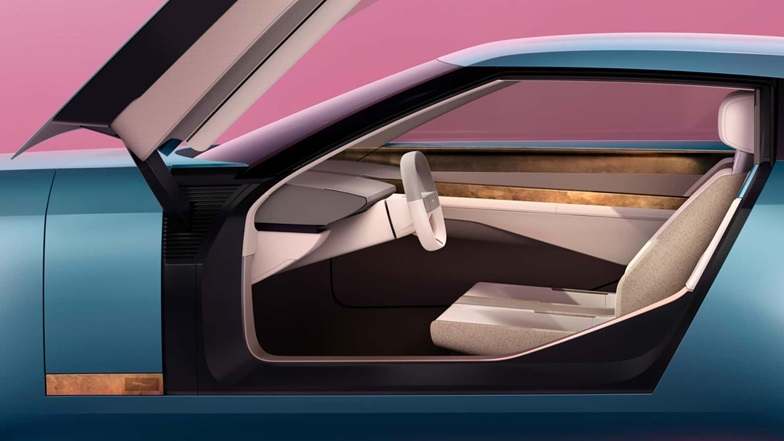Jaguar’s Bold EV Gamble, Type 00 Concept and the Road Ahead
Jaguar EV concept leaked, previews automaker’s future design direction
Jaguar is a brand that’s long been associated with elegance, performance, and timeless British design. However, in recent years, it has struggled to find its footing in a rapidly evolving automotive industry. Now, Jaguar is placing its future in the hands of the all-electric Type 00 Concept, a strikingly designed luxury EV set to debut in 2026 with a price tag of around $120,000.

But is this bold bet enough to revitalize a brand that has been on the decline for years? Let’s dive into Jaguar’s challenges, its daring strategy, and whether it stands a chance in a market crowded with competition.
1. The State of Jaguar: A Brand in Crisis
Once a powerhouse in the luxury automotive world, Jaguar has faced a steady decline. In 2023, the brand sold just 8,348 vehicles in the U.S., an 80% drop from 2017, and a mere 64,000 units globally. Compare that to Mercedes-Benz and BMW, which each sell 40 times that volume in the U.S. alone, and it’s clear that Jaguar has been left behind.
Jaguar’s current lineup, including the once-revolutionary but now-outdated I-Pace, feels like remnants from another era. Efforts to compete with established luxury brands like BMW and Mercedes have faltered, hampered by issues such as inconsistent quality, uninspired designs, and frequent shifts in ownership and strategy.
However, the root of Jaguar’s struggles may lie in its identity. Jaguar has traditionally excelled in sedans and sports cars—segments that have seen declining global demand in favor of SUVs. Meanwhile, its sibling brand Range Rover dominates the luxury SUV space, leaving Jaguar in the shadows.

2. The Type 00 Concept: A Fresh Start
The Type 00 Concept is more than just a car; it represents a complete reset for Jaguar. With production of current models ending in 2025, Jaguar is taking a two-year hiatus to reinvent itself as an all-electric luxury brand.
The Type 00 was unveiled during Miami Art Week, signaling Jaguar’s intent to blend high design with exclusivity. The car’s bold, artistic design is a significant departure from its current lineup and is a clear attempt to attract affluent buyers who prioritize aesthetics as much as performance.

Jaguar plans to elevate its average transaction price from $60,000 to approximately $120,000, with base prices likely starting around $100,000. While this strategy may seem risky, Jaguar hopes that by positioning itself as a boutique luxury brand, it can thrive in the high-end EV market.
3. Challenges in the Luxury EV Space
Jaguar isn’t the only brand attempting to carve out a niche in the luxury EV segment. Competition is fierce, with established players like Porsche, Mercedes-Benz, BMW, and Tesla dominating the market.
Here’s how Jaguar stacks up against its competitors:
| Competitor | Key Strengths | Challenges |
|---|---|---|
| Porsche Taycan | Stellar performance, brand prestige | Recent global sales down 50%, suggesting waning interest |
| Mercedes EQS | Industry-leading range and luxury features | Fails to resonate with traditional ICE customers |
| Tesla Model S | Incredible performance (1,020 horsepower), lower price ($89,900 for Model S Plaid) | Lacks the refinement of traditional luxury brands |
| Lucid Air | Exceptional range and cutting-edge design | Struggles to attract mass-market buyers |
| Jaguar Type 00 | Distinctive design, potential first-mover advantage as a legacy brand with an all-electric lineup | Unproven performance, steep competition, and brand rebuilding |
The luxury EV market is unforgiving, especially for newcomers. Buyers in this price range often gravitate toward established names with a proven track record of quality and performance.

4. Lessons from the Past: What Jaguar Must Avoid
Jaguar’s recent history is littered with missteps. From scrapping a near-completed electric XJ project (and losing $634 million in the process) to inconsistent quality in its vehicles, the brand has struggled to maintain credibility.
One critical mistake Jaguar must avoid is ignoring market preferences. The decision to launch with a sedan-style electric GT, instead of a high-volume SUV, is reminiscent of Lucid’s error with the Air. Americans, in particular, are overwhelmingly choosing SUVs, and Jaguar must quickly pivot to meet that demand.
Another potential pitfall is pricing. While Jaguar aims to compete in the $100,000+ luxury EV segment, this is a highly competitive and niche market where buyers are notoriously discerning.




5. Reasons for Optimism: Jaguar’s Trump Cards
Despite the challenges, Jaguar does have several advantages:
- Visionary Leadership:
Jaguar’s design direction is now led by Gerry McGovern, the mastermind behind Range Rover’s resurgence. McGovern’s ability to transform Range Rover into a symbol of modern luxury gives hope that he can work similar magic for Jaguar. - A Clean Slate:
By starting fresh in 2026, Jaguar can fully embrace the electric future without being weighed down by legacy ICE vehicles. This makes it one of the first legacy luxury brands to commit entirely to EVs—a bold move that could resonate with environmentally conscious buyers. - Support from Tata Group:
Jaguar’s parent company, Tata Group, is financially stable and has deep pockets to support the brand’s transformation. JLR recently posted $36.3 billion in revenue, with $2.75 billion in profit, largely driven by Range Rover’s success. - Brand Recognition:
While new players like Lucid and Rivian struggle for name recognition, Jaguar still carries a legacy of elegance and performance. For many, the name “Jaguar” evokes images of classic cars, fine leather, and British aristocracy—a valuable asset in today’s brand-driven culture.
6. The Road Ahead: What Jaguar Must Do
To succeed in the luxury EV market, Jaguar must excel on multiple fronts:
- Flawless Execution: The Type 00 and subsequent models must deliver on performance, technology, and quality. Luxury buyers expect no compromises.
- Distinctive Design: Jaguar’s emphasis on design could be a key differentiator. However, it must go beyond aesthetics and offer practical innovation.
- Competitive Pricing: While the target price of $120,000 positions Jaguar as an aspirational brand, it must offer tangible value to justify the cost.
- SUV Expansion: To capture the lucrative SUV market, Jaguar must quickly develop electric SUVs alongside its sedan offerings.
- Customer Experience: Jaguar plans to open exclusive brand stores in luxury districts, such as Paris’ “Golden Triangle.” These immersive experiences must effectively convey the brand’s new identity and attract high-net-worth buyers.

Will Jaguar’s Gamble Pay Off?
Jaguar’s transition to an all-electric lineup is a bold and risky move, but it may also be its best chance for survival. By embracing cutting-edge design and targeting affluent buyers, Jaguar hopes to carve out a niche in the competitive luxury EV market.
However, success is far from guaranteed. Jaguar must contend with established rivals, overcome past missteps, and prove that it can deliver a world-class product. The Type 00 Concept represents more than a car; it’s a symbol of Jaguar’s attempt to reclaim its position as a leader in the luxury automotive world.
As the first legacy luxury brand to go fully electric, Jaguar’s journey could set the tone for the industry’s future. Whether it will thrive or falter remains to be seen, but one thing is clear: Jaguar isn’t going down without a fight.
Let us know your thoughts—does Jaguar have what it takes to succeed in the luxury EV space?
Related Post



